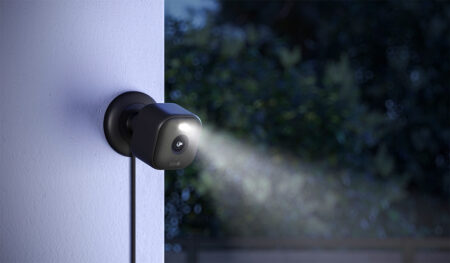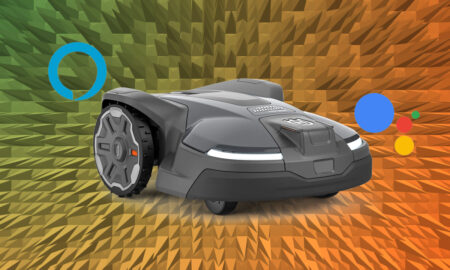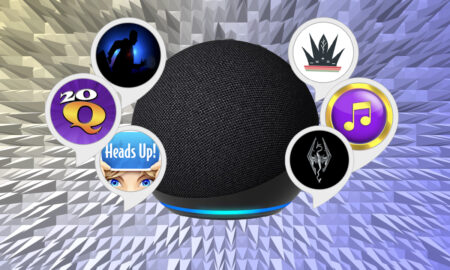At this price, the Studio should have Sonos scared
The revamped Echo Studio is an impressive attempt to woo audiophiles, with a price tag that makes the Studio a serious threat to Sonos, the HomePod and other rivals Combined with Amazon Music Unlimited's HD music subscription tier, Amazon isn't only matching its high-end music rivals, but punching above some of them. Throw in that Zigbee radio, Matter skills, and Alexa, and you've got the most impressive Echo speaker yet.
Pros
- Powerful sound
- Works as a Dolby Atmos TV speaker
- Hi-res audio
- Matter controller
Cons
- Really needs Amazon Music HD
- Bass could be tighter
- Same design as 1st-gen
Amazon spent years telling us how great its smart speakers sound for listening to music and, for a few years at least, it was all a bit of a bluff.
However, in late 2019, Bezos Inc. actually did throw a smart speaker into the mix with the audio clout to back up those claims… the Amazon Echo Studio.
The Echo Studio was Amazon’s first true attempt at offering a smart speaker that can go head to head with the likes of the HomePod and the Sonos speakers of the world and it was incredibly well received by reviewers who praised its big sound.
Fast forward a few years and we’ve been treated to 2nd-gen of the Echo Studio, which looks the same but has a lot of improvements under the hood.
The price tag stays the same, at $199.99 / £189.99 so it’s a fair chunk of change ($50 / £60) cheaper than the Sonos Era 100 which has just been announced but it actually goes up the much more expensive ($449 / £449) Sonos Era 300 as a ‘spatial audio’ smart speaker.
It doesn’t have the hardware to properly compete with Sonos’ newest flagship but it does check a lot of the same boxes, at less than half the price.
It’s, therefore, available at a price that could entice people to have two Echo Studios working in tandem – and perhaps hook them up to the Echo Sub for an added bass kick.
Read this: The best Alexa speakers
The Studio also takse advantage of Amazon Music Unlimited’s high-definition tier, which includes a range of Dolby Atmos tracks.
The new Studio sounds great, but where does it sit in the arena of smart speakers, and is 3D audio worth it? Here’s our full verdict.
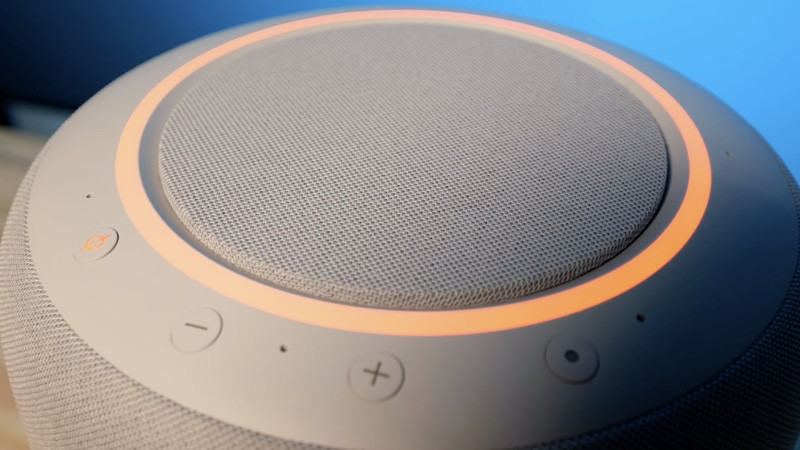
Amazon Echo Studio: Design and setup
Clear some space – the Echo Studio is going to need a lot of it. At just over 8 inches in height and nearly 7 inches wide, this smart speaker is large and in charge.
The Studio has a cylindrical design, but as those dimensions tell you it’s much more rotund than Amazon’s “regular” Echo speakers. It looks like a HomePod that pounded one too many protein shakes.
That’s not to say it’s ugly, but it’s also not much of a looker. Side by side with other smart speakers, it is certainly one of the biggest, towering over the HomePod and the Sonos One.
Little one: Amazon Echo Pop review
However, the new glacier white model is a bit prettier than the bulky black charcoal version but, apart from that, it’s near identical to its predecessor.
More important is what you can’t see: three 2-inch midrange speakers, a 25mm forward-firing tweeter and a downward-firing 5.25-inch bass woofer.
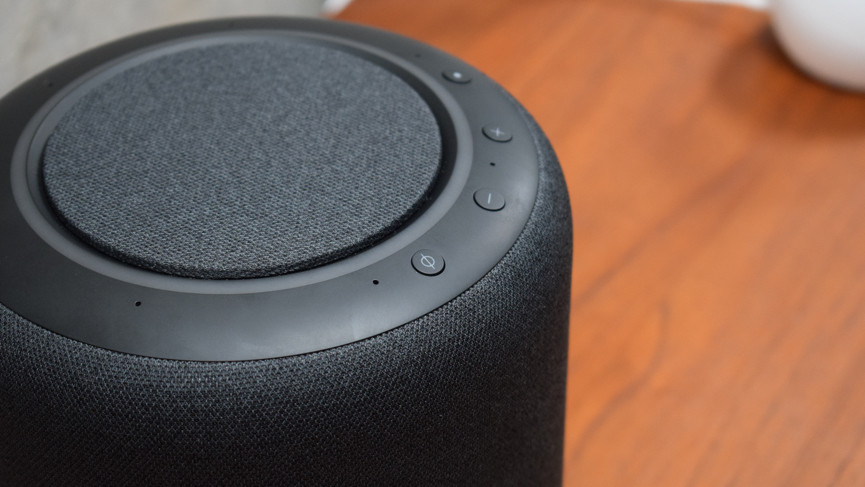
But this is an Alexa speaker too, of course, complete with the trademark green-blue Alexa ring on top that lights up when the assistant is listening.
There are also four buttons along the roof of the Studio: two volume buttons, a mic-mute button, and a button to wake Alexa.
To set up the Studio, you simply follow the usual process in the Amazon Alexa app: find it, name it, allocate it to a room. It really is very quick and easy (so long as you already have an account and have the app running); we had our Studio knocking out the hits in a couple of minutes.
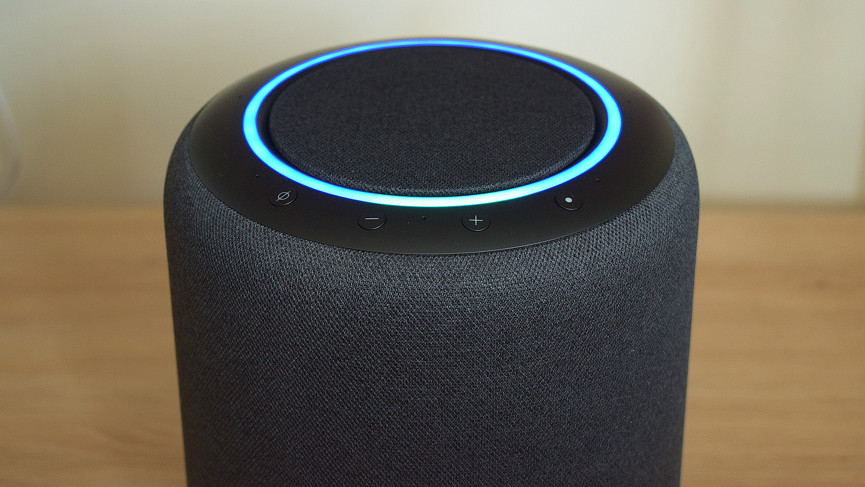
Amazon Echo Studio: Features
For the most part, the Echo Studio is just a regular Echo that’s been massively beefed up in the acoustics department. That means you can call on Alexa for all your usual queries and commands, and it means integration with all of your smart home devices too. This being a first-party speaker, it also guarantees to get all the new features before other third-party speakers.
There are two ‘levels’ to the Studio experience. The first is stereo sound, for which you can use many streaming services including Spotify, Apple Music, Deezer, Tidal and more.
You can control these services on the Studio using your phone or have Alexa control the playback with voice controls.
If you’re familiar with using Alexa as a DJ, you’ll know that you can select a default service in the app, so selecting Spotify means you can simply say, “Alexa, play Grizzly Bear” rather than specifying, “Alexa, play Grizzly Bear on Spotify.”
And if you’re not using a compatible music service, you can connect to the Echo Studio via Bluetooth too.
The second level to the Studio listening experience, and the one that has been enhanced with the 2022 Echo Studio sequel, is spatial audio.
Through Amazon Music Unlimited the Echo Studio 2 boasts an improved custom-built spatial audio processing technology via a new frequency range extension, with support for both Dolby Atmos and Sony 360 Reality Audio.
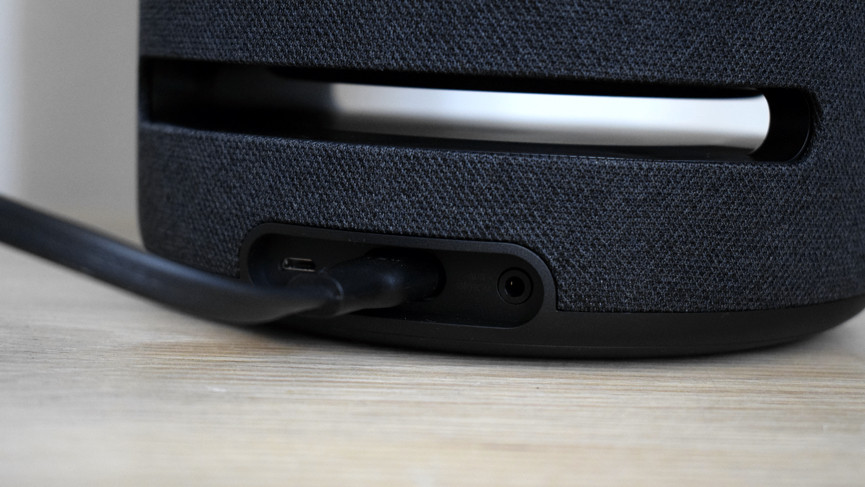
Another nice feature of the new Studio, carried over from the first iteration, is the built in Zigbee hub; allowing you to connect supported Zigbee devices direct to the Studio, as opposed to via a bridge/hub of their own – Philips Hue lights, for example, can be directly controlled by the Studio.
What’s more, the latest Echo Studio is also capable of playing a big part of your Matter smart home, as it’s both a Matter controller and Thread border router.
The Echo Studio can also perform as Dolby Atmos speaker for your TV, but only with Fire TV devices (this is Amazon’s world you’re living in, after all). You can also hook up two Echo Studio speakers with an Echo Sub for the fully-loaded home theater setup.
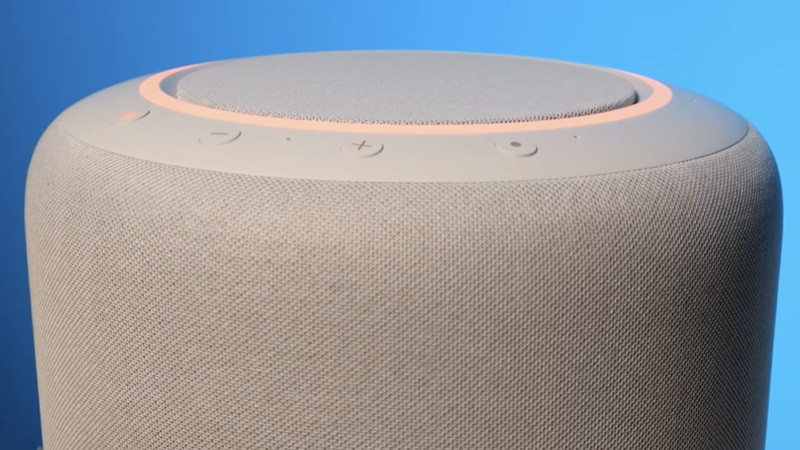
Amazon Echo Studio: 3D audio and sound quality
So how does this all sound? There’s no doubt that this is the best sounding Echo by a country mile – but it doesn’t quite unseat Sonos yet.
The Echo Studio offers a spacious sound, but isn’t world beating at low or high ends. It won’t wow you with bass, but your music will sound superb, and you’ll likely pick out details you’ve not heard before.
So, it’s time to talk spatial audio, one of the major features Amazon is hanging the Studio on.
The format is supposed to product a more spatial quality that envelops you in the music, giving you the sense that instruments are positioned around the room. Amazon uses both Dolby Atmos Music and Sony 360 Reality Audio codecs in the tracks to make this happen.
But the more pertinent question here is, does the 3D actually work? Yes, but not as noticeably as we thought it would; it really seems to depend on the song and the way in which it’s been mixed for 3D.
Spatial audio is the ‘big thing’ in music right now – at a briefing for the Era launches we were told by a Sonos executive that 80 of the top 100 Billboard tracks in the US are available in Dolby Atmos.
With the new Studio and Elton John’s Rocket Man in 3D was barely better to our ear, but Lucy In The Sky With Diamonds had a more obvious boost over its stereo version. Same with Marvin Gaye’s What’s Going On, which produced a more “surrounding” sound.
When it works, the separation does give the song a wider sense of scale, but a few tracks we tested actually felt strangely overproduced in their 3D mix. In sum: it really depends on the song..
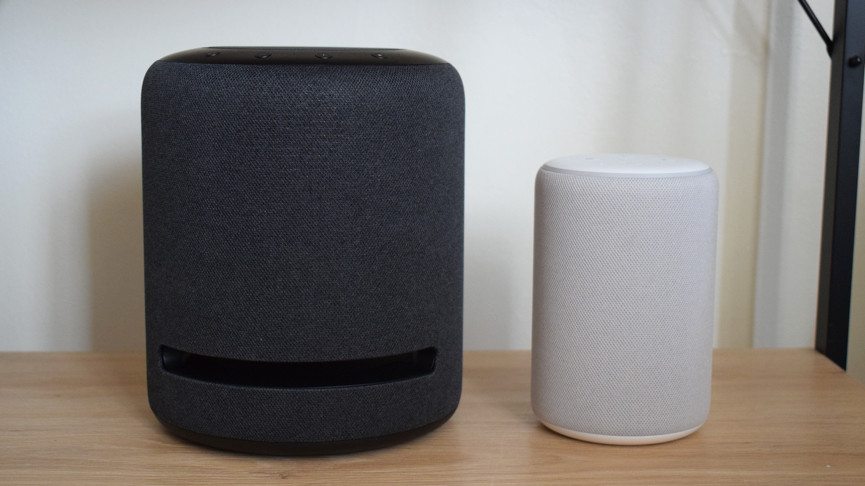
All that said, we still think there are plenty of good reasons to buy the Studio. If you’re willing to pay for Amazon Music, you’ll get access to lossless quality.
Studio still supports CD-quality lossless 16-bit 44.1kHz audio or in “Ultra HD” 24-bit with sample rates up to 192kHz. Both of these sound better than your average MP3s, like the ones you’ll find on Spotify.
The Studio also adapts acoustically to its surroundings. The seven microphones on top, while ears for Alexa, also let the Studio analyze how sound is bouncing around the room and tune itself to sound better.
It’s the same feature found in the HomePod and Sonos One, and means you don’t have to worry too much about where you’re placing it (although we’d recommend a nice open spot if possible).
Speaking of which, we tested the Studio against the HomePod, Sonos One, Sonos Five and Sonos Move. In terms of audio quality alone, it’s punching above Apple’s speaker and to most people’s ears on par with the Sonos One.
The Studio’s biggest flaw is its bass response, which can be overwhelming in some mixes, and overall feels less tight than on Sonos speakers.
So they key question for most people will be whether to opt for the Studio over a Sonos. If Alexa is already embedded into your home, then you should give Studio serious consideration, as it’s a far better smart speaker.
For Amazon’s rivals, that price should be a much bigger concern than 3D audio, and makes this smart speaker all the more convincing.




